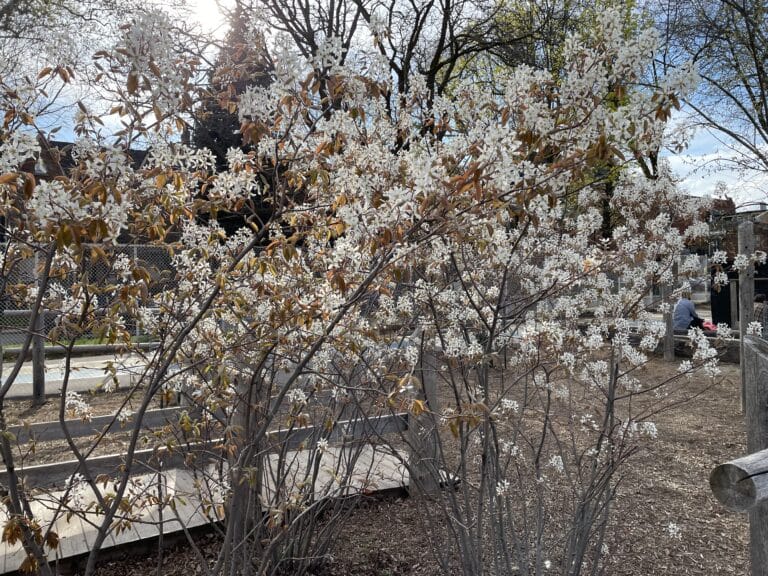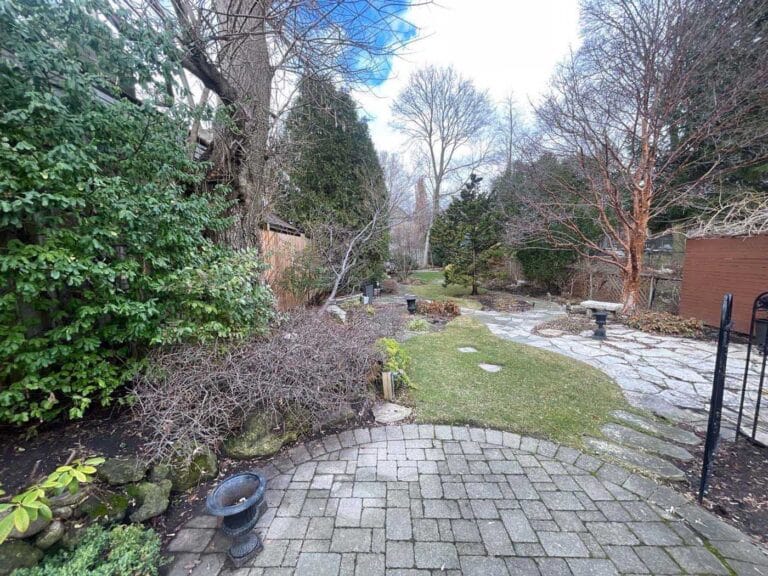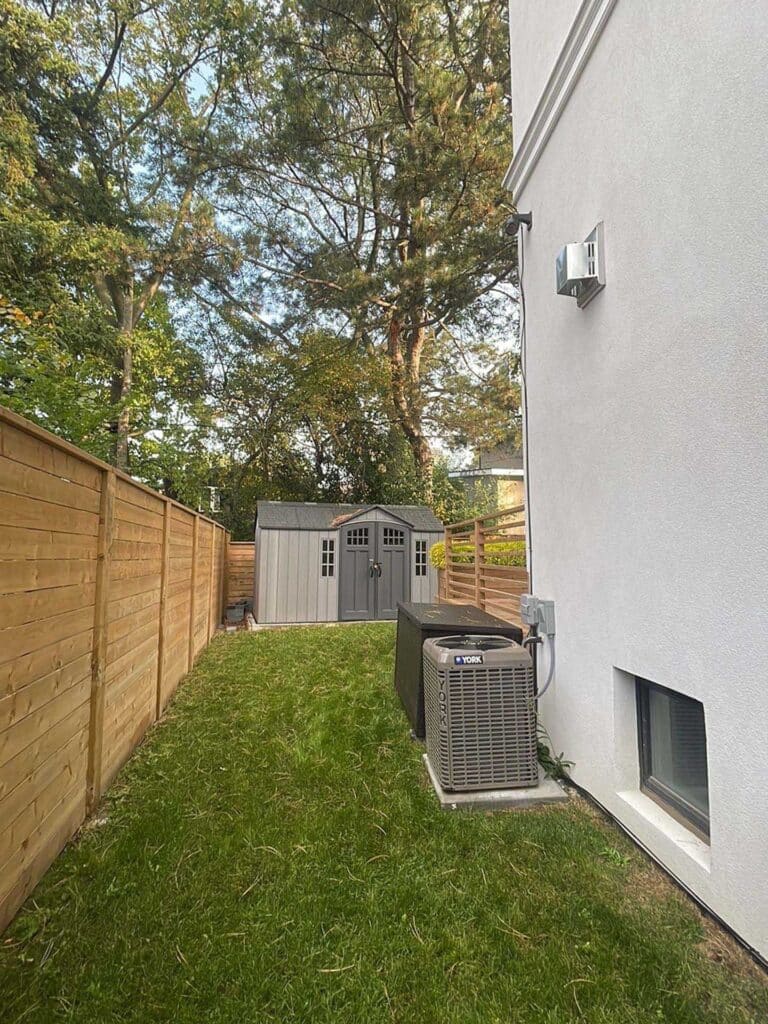Pollinator gardens are everywhere these days. If you read anything about gardening, you’ll know that pollinator plants: in, manicured lawns: out. In reality, though, the manicured lawn is still easier to find on a city street than a pollinator garden, and many residents still don’t know exactly what is meant by pollinator gardens. Even in Toronto, homeowners still receive letters from the city insisting they tear out natural landscaping to replace it with more sightly traditional landscaping.
However, things are changing. Every year, more and more people plant gardens that are friendly to pollinators like bees and butterflies. If you’re one of these gardeners, or thinking about putting in a pollinator garden, you may be wondering how your trees can support pollinators as well. We’ll help explain the relationship between trees and pollinators, and what your trees can do to make your garden pollinator-friendly.
What Are Pollinators and Pollinator Plants?
Butterflies, bees, and moths are all considered pollinators. Flying from blossom to blossom, these insects help fertilize growing plants by carrying pollen from one plant to another. Their work is essential for the survival of native species in our ecosystem. Their continued activity keeps our ecosystem, and our food system, sustainable.
Some of the most common pollinator garden plants are becoming well-known. These are all species native to Ontario, including:
- Coneflower, or echinacea
- Butterfly weed
- Milkweed
- Goldenrod
- Black-eyed Susan
- Giant hyssop
- Vervain
Why Pollinators Are Important
Without pollinators, our ecosystem would collapse. Pollinators move genetic material that’s necessary for flowering plants to reproduce. These plants are responsible for giving us fruit, vegetables, and nuts; for preventing soil erosion; and for diverting carbon.
Native species help keep soil systems and ecosystems in balance. Native plants and trees provide a supportive habitat and food sources for pollinators. But where do trees come into play in a pollinator garden? Flowering plants can be easy to plant, from seed or seedling, and care for, but trees require a different type of attention and long-term thinking.
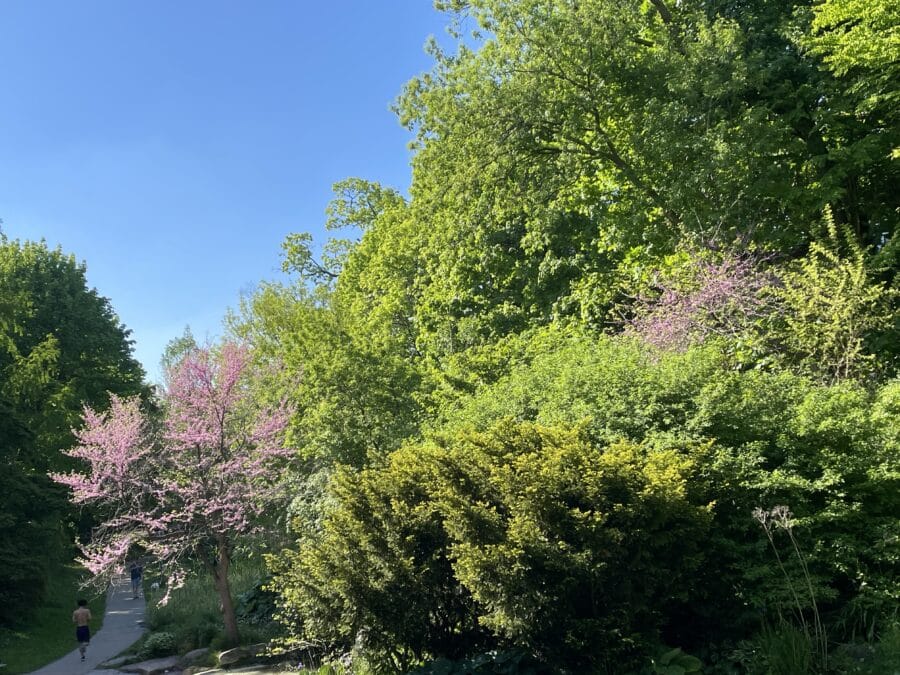
How Trees Contribute to the Ecosystem
How do trees contribute? Trees provide shade, shelter, space to nest or lay eggs for pollinators, and contribute to overall soil and ecosystem health. Tree coverage in a neighbourhood helps keep the air cool in summer and can provide insulation in winter. Healthy trees help contribute to a healthy space for pollinators, but native tree species and specific flowering or fruiting species of trees and shrubs help directly benefit pollinators. Flowering trees and small flowering shrubs make the best additions to pollinator gardens. Trees also provide protection for gardens from strong winds, and from soil erosion near bodies of water.
How to Support Gardens with Your Trees
Planting native trees gives the rest of your garden the best chance at success. Native species are already adapted to the climate. Native trees are built for coexisting in the same ecosystem as small native plants. Non-native species, like Toronto’s common Norway maple tree, try to outcompete native species. They tend to grow faster and absorb more of the available soil nutrients, taking resources and space away from native plants on the ground. Invasive species can grow taller and fuller quickly, providing too much shade for native plants to flourish.
Native tree species are homes to butterflies, moths, and caterpillars. This role as insect habitat is one of the key features of trees in a pollinator garden. With their early flowering in early spring, trees are an important pollen source for insects before flowering plants start to bloom.
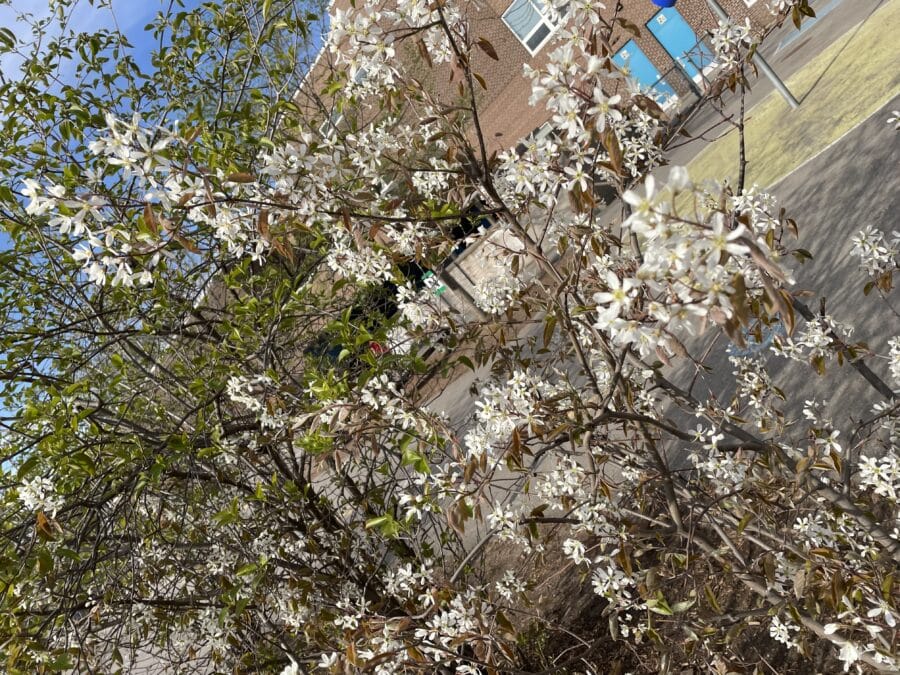
Best Species to Plant for Pollinator Gardens
Considering large shade trees, trees that host many insect species are the best contributors to pollinator gardens. Oak trees are important hosts for bugs and caterpillars along with trees in the prunus family, which includes wild plum, chokecherry, and pin cherry. Other larger trees native to Ontario that are helpful as insect habitats and pollen sources for spring insects include red oak, red maple, basswood, Ohio buckeye, hackberry, and tulip tree. The northern catalpa is another beautiful spring-flowering tree full-sized tree attractive to pollinators.
In larger trees, species like oak and birch produce large amounts of pollen from their long hanging catkins. These species are typically pollinated by wind. Coniferous trees are also typically wind-pollinated. But even if you’re looking for a large shade tree, replacing a species like a Norway maple with a native alternative like a red maple, sugar maple, or Freeman maple will help better contribute to the ecosystem and resist soil erosion and effects of climate change.
Flowering trees and shrubs are ideal choices to attract pollinators. Native flowering trees like the serviceberry, the eastern redbud, and flowering dogwood are all beautiful options. The eastern redbud blooms in a cascade of pinkish-purple blossoms in spring, while most serviceberry and dogwood species have white flowers. These all typically grow into small trees, providing smaller amounts of shade for your pollinator garden. American hazelnut trees provide both shade and edible nuts.
Small shrubs like elderberry, chokecherry, and highbush cranberry have edible fruits. There are many small shrub options for pollinator gardens like the spicebush, alternate-leaved dogwood, juniper, and pussy willow. Witch hazel is one of the latest-blooming plants, flowering from September to November.
Best Larger Trees for Pollinators
- Oaks
- Red maple
- Basswood
- Linden
- Black Locust
- Ohio Buckeye
- Northern Catalpa
- Hackberry
- Tulip Tree
Best Small Trees and Shrubs for Pollinators
- Serviceberry
- Eastern Redbud
- Flowering Dogwood
- Alternate-Leafed Dogwood
- Chokecherry
- Elderberry
- Spicebush
- Witch Hazel
- Sumac
How to Support Pollinators with Your Trees
Planting natural groundcovers, like clover, moss, or flowering plants, instead of turf grass, helps provide pollinator food and habitat. But it also helps your trees and the ecosystem — carefully mowed and maintained lawns can create nutrient imbalances in the soil. That’s why arborists encourage fertilizing urban trees, where natural fertilizers help restore nutrients to the soil. In the wild, nutrients are provided through a cycle of fallen leaves and decaying plants and flowers in fall and winter. Having natural groundcover, instead of raking leaves and mowing lawns, can help restore the nutrient processes of the wild.
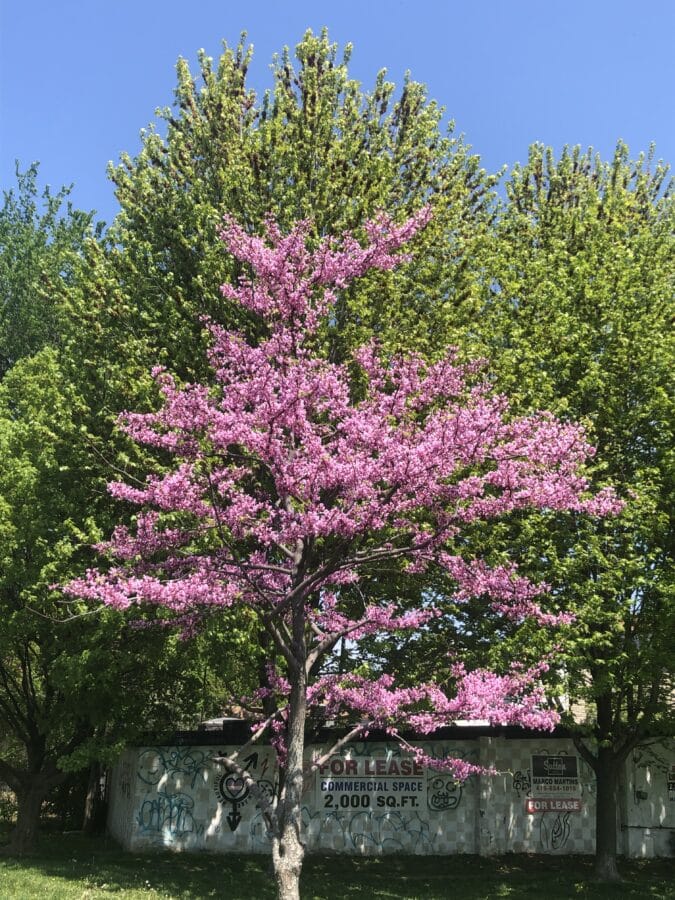
Tree Maintenance in Your Pollinator Garden
Your trees can also help your pollinator garden by doing less. Leaving fallen leaves on the ground to disintegrate into the soil will help restore nutrients to the soil in fall and winter. Fertilizing your trees with natural fertilizers, like compost tea, will help with nutrient balance in the soil as well. Don’t use pesticides, as some of these will also work to kill pollinator species, or the plants they depend on.
Mulching in spring or fall also helps your trees thrive. If you have large trees dropping leaves on the ground, these leaves can provide the mulch source by staying on the ground, or you can collect and redistribute fallen leaves to use as mulch throughout a garden. Save yard cleanup until late spring, as leaves and decaying plants provide winter habitat for butterflies and insects.
Creating a Harmonious Pollinator Garden
Diverse landscape features help attract different pollinators to your garden, and having a variety of plants for butterflies ensures there are different blooms throughout the spring through fall. Consider planting a variety of alternative groundcover, flowers, and small trees or shrubs — if your yard is hardscaped with patio stones or concrete, a few pollinator flowers can only do so much to attract bees to your garden.
Decaying logs and branches also provide habitat or resting sites for birds and butterflies; leaving some of these in your garden following tree pruning or removal can help contribute to the diverse natural features necessary for a pollinator garden.
Pollinators don’t only need plants for food; they also use them for laying eggs. Areas of bare ground are important for your pollinator garden as well — pollinators can burrow or build nests.
Trees for Bees and Butterflies
Trees are an important contributor to your pollinator garden and the ecosystem. Properly maintained native trees contribute pollen, shade, and pollinator habitats to your garden. Flowering trees, fruiting trees, and small flowering shrubs and bushes can all be attractive and useful plants to plant as part of a pollinator garden. Are you looking for advice on trees to plant for pollinators? Take a look at our tree planting services

